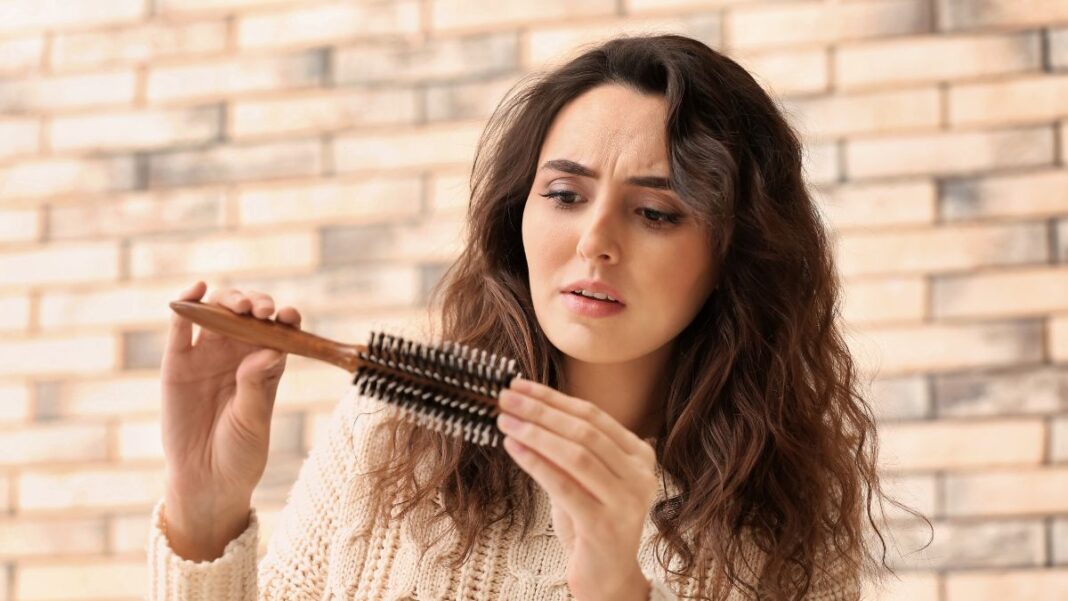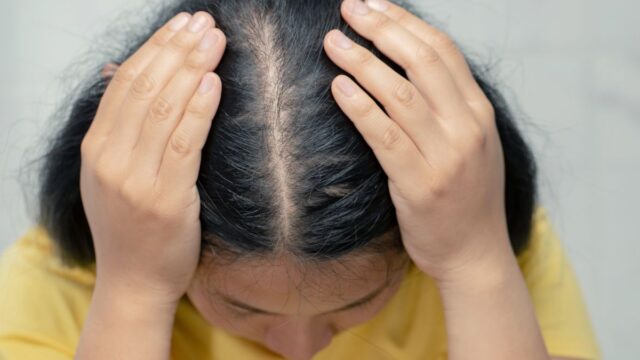You lose 100 locks of hair on average every day and that’s perfectly normal. Yeah, you read that right! But anything way beyond it enters the periphery of hair loss, which usually gets aggravated enough to reach the stage of baldness or the complete lack of hair on your head.
The various stages of hair loss have been defined by the Hamilton-Norwood scale and the Ludwig scale. These explain the various stages of hair loss till it reaches baldness.
Let’s get started with the 7 stages of hair loss, according to the Hamilton-Norwood scale.
7 Stages Of Hair Loss, According To The Hamilton-Norwood Scale
Stage 1
The hair fall at this stage is nothing significant. Hence, you won’t notice this until you reach the advanced stages of it.
Stage 2
Hair loss starts becoming apparent when you lose hair from around the temples. This is generally rare among children and is pronounced among older adults, especially males. However, this stage doesn’t raise much concern.
Stage 3
This is the first stage of hair loss where you start noticing the visible change, even alarm to a certain extent, as a result of the changes in your hairline and reducing thickness. You are likely to notice a receding hairline and visibly lesser hair where the new hairline is receding. You may also see thin hair or no hair at all along the areas where the hair has receded.
This stage is also rare among young adults and generally common among elderly adults, except in the case of male pattern baldness. This stage may be accompanied by another level of hair loss referred to as “Vertex Baldness”, which is defined by receding hairline not only from the temples but from the top of the head as well.
Stage 4
At this stage, the lock of hair is restricted to a strip between the temples and the crown. At this stage, the emphasis is on the fact that there is still some left on the head, although it has thinned down visibly. Hair from the temple has already receded, however, the crown still retains a few. In short, the first sign of hair loss at this stage is how much hair has receded from the front and top of your head. The hair strip may resemble a “U” shape when looked at from a higher platform.
Stage 5
Here, the strip of hair that was there between the temples and the crown in the previous stage thins down further and becomes more sparse. Here, the receding hairline and the hair loss from the temples almost meet.
Stage 6
The thinning strip of hair that existed between the temples and the crown is expected to have thinned down further to the extent that it does not exist anymore, or well, almost not. At this stage, the hair loss is significant. Complete disappearance of hair is referred to as Stage 6A, although the two distinct areas of hair loss are considered to be one at this point.
Stage 7
This is the last and the most aggravated stage of hair loss, as defined by the Hamilton-Norwood scale. However, the scale also mentions Stage 8, although it is a more aggravated version of Stage 7. The hair solely appears over the ears and around the back of your head. Resembling one large circular bald patch, there will hardly be any hair left atop the head. The hair that does grow now is very weak and thin and prone to frequent hair fall.
3 Stages Of Hair Loss According To The Ludwig Scale
While the Hamilton-Norwood scale, which we just discussed, specialises in explaining male pattern baldness, we will now talk about the Ludwig scale that follows the same route as the former, although hair loss here has been categorised into 3 classifications. Let’s talk about the 3 stages here.
Stage 1
The hair loss becomes visible atop the head and at the crown. Because of the thinning of the locks, the scalp starts becoming visible from atop your head.
Stage 2
Here, the hair loss exposes the scalp further, to the extent that it becomes pronounced to people around you.
Stage 3
At this stage, the hair has completely disappeared from the crown and the ones that do exist over your ears and at the back of your head have also become visibly thinner than what it was in the last stage. The baldness becomes even more visible to others as the hair from atop your head has completely disappeared.
Open up like never before and participate in conversations about beauty, mental health, menstrual & sexual health, and more. Desi women, join our community NOW!



